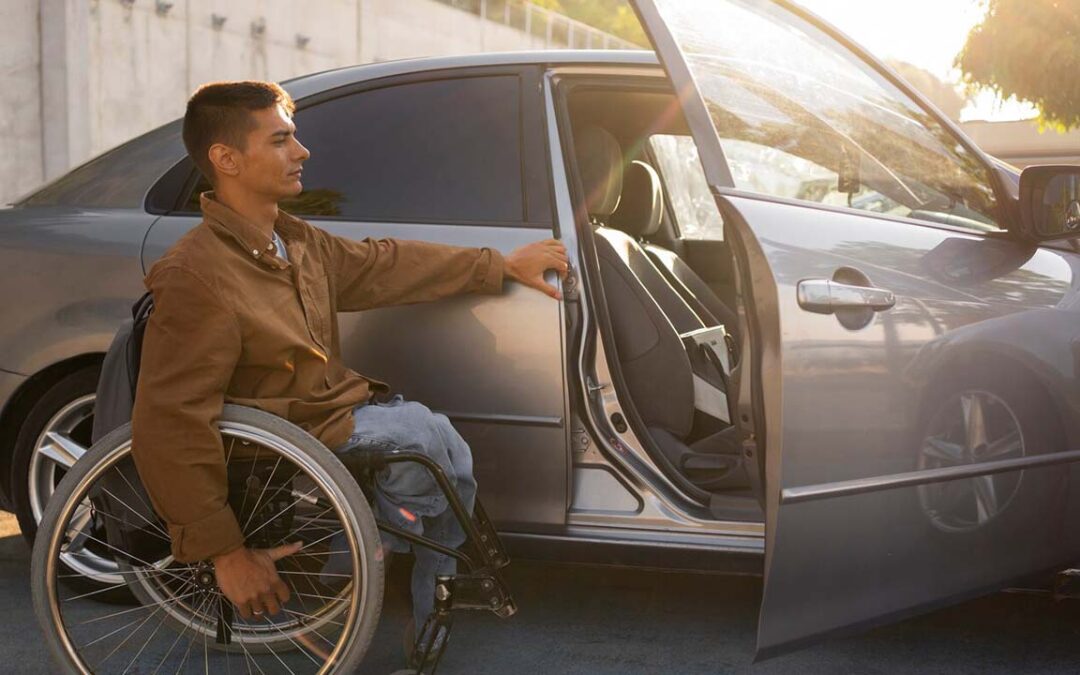When it comes to mobility solutions, wheelchair accessible vehicles (WAVs) provide independence and convenience for those with limited mobility. However, choosing the right vehicle can be daunting due to the variety of options and features available.
Whether you’re searching for a private vehicle, a handicap taxi near me, or a wheelchair-accessible van for care-related use, this guide will help you navigate the essential features, considerations, and best practices to choose a WAV that suits your lifestyle today and tomorrow.
1. Assessing Your Personal Needs
Before diving into technical specs or vehicle brands, take time to assess your or your loved one’s specific needs. Start with these core questions:
- Will the wheelchair user stay in the wheelchair while travelling, or will they transfer to a seat?
- Is this vehicle for personal or professional (e.g. care home, taxi, or community transport) use?
- How often will the vehicle be used? Daily errands? Long journeys?
- Do you need space for other passengers or caregivers?
- Will you be driving, or will someone else operate the vehicle?
Clearly defining your situation will help guide your decision. For example, a compact WAV may be ideal for solo urban driving, while a large WAV suits families or care services with multiple passengers.
2. Key Features to Look For
Entry Mechanism: Ramp vs Lift
- Manual Ramps: Cost-effective and lightweight, but require some physical strength to operate. Suitable for users with support or lighter wheelchairs.
- Electric Lifts: Automatically operated and ideal for heavier powerchairs or users needing full assistance. These are more expensive but offer ease of use and comfort.
Also consider rear-entry vs side-entry access, depending on your parking situation and personal preferences.
Seating Arrangements
WAVs can feature various seating layouts. Consider:
- Will the wheelchair user sit at the front, beside the driver?
- Do you need folding or removable seats to create extra space?
- Does the layout allow for easy conversation, eye contact, and comfort?
Flexible seating is particularly valuable if you expect to transport different groups of passengers.
Headroom and Floor Height
A lowered floor and high roof ensure ample space, especially for taller users or bulky powerchairs. Adequate head clearance makes boarding and travelling more comfortable and reduces the risk of injury.
Securement Systems
Safety is non-negotiable. Make sure the vehicle has:
- Wheelchair tie-downs
- Lap and shoulder restraints
- Crash-tested anchoring systems
These systems should comply with UK and EU standards and be easy to use for caregivers or drivers.
3. Vehicle Types to Consider
Small WAVs
- Best for personal use
- Ideal for urban driving
- Easier to park and manoeuvre
- Limited space for other passengers
Medium WAVs
- Suitable for families or caregivers
- Offers space for 1 wheelchair and up to 3–4 passengers
- Comfortable for longer trips
Large WAVs
- Typically vans or minibuses
- Suitable for multiple wheelchair users
- Great for care facilities, community transport, or handicap taxi near me services
These often resemble minibuses and are perfect for multiple wheelchair users or professional use such as a handicap taxi near me.
Also, read more about the What is Wheelchair Accessible Vehicle
4. Budget and Funding Options
WAVs can range from £10,000 for used models to over £60,000 for high-spec, new conversions. Fortunately, there are multiple ways to fund or reduce costs.
- Motability Scheme (UK): If you receive benefits like the Enhanced Rate of the Mobility Component of PIP, you may qualify for a Motability lease on a WAV.
- Second-Hand WAV Market: Many reputable dealers offer used WAVs with full service histories and warranties. This can be an affordable option for budget-conscious buyers.
- Financing and Leasing: Some suppliers provide flexible finance options including:
- Hire purchase
- Contract hire
- Balloon payment finance
Make sure to ask about insurance, maintenance, and mileage terms.
5. Try Before You Buy
Reputable wheelchair accessible van providers offer home demonstrations or test drives. This is crucial to ensure comfort, visibility, and ease of access. Never purchase a WAV without experiencing it first-hand. Ask for a:
- Home demonstration
- Test drive
- Loading/unloading practice
Reputable UK dealers such as Allied Mobility, Brotherwood, and GowringsVersa Mobility offer in-person demonstrations and consultations. Test different entry styles, layouts, and vehicle sizes to find what works best.
6. Future-Proofing Your Purchase
Consider the long-term: Your needs today may change in the future. A smart WAV purchase takes this into account.
- Will the user’s mobility deteriorate or require larger equipment?
- Is the vehicle easily adaptable for new tie-down systems or seating arrangements?
- Can the interior be reconfigured without major modifications?
- Will your mobility needs change?
- Is the vehicle adaptable for new equipment?
- Can it handle future care requirements?
Final Thoughts
Choosing the right wheelchair accessible vehicle is more than a purchase it’s an investment in freedom, safety, and dignity. Whether you’re buying for personal use or professional transport, understanding the key factors like vehicle size, entry mechanism, funding options, and future adaptability will help you make an informed decision.
Don’t rush. Book demos, explore finance options, and consult mobility experts. The right WAV will provide not only comfort and reliability but also restore confidence and independence in daily life.
